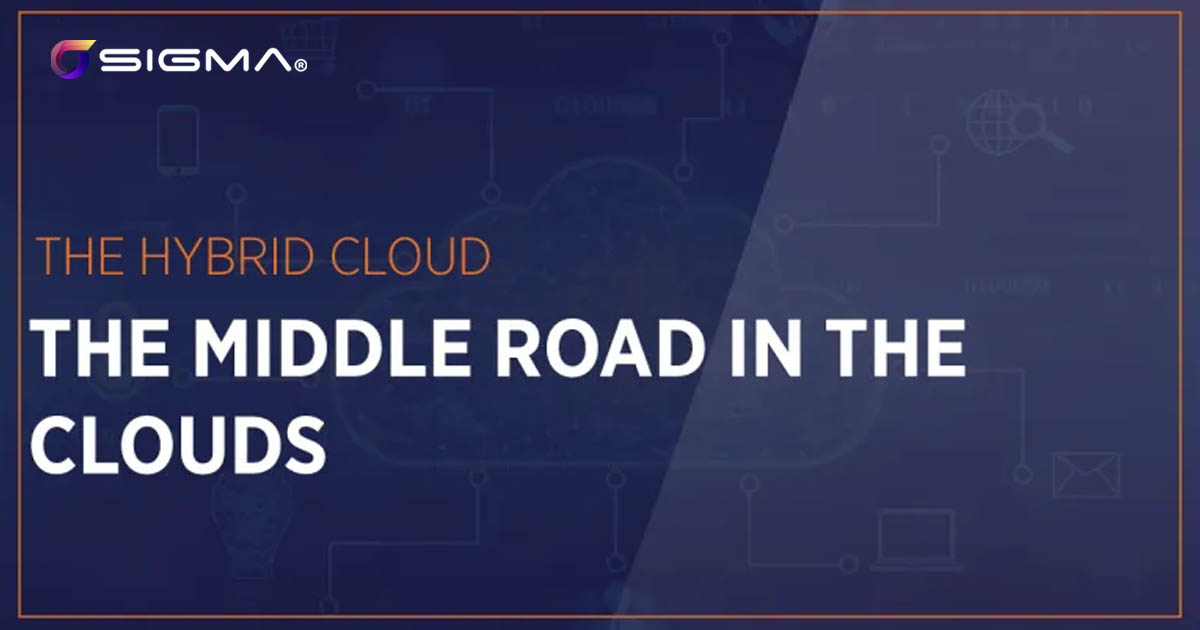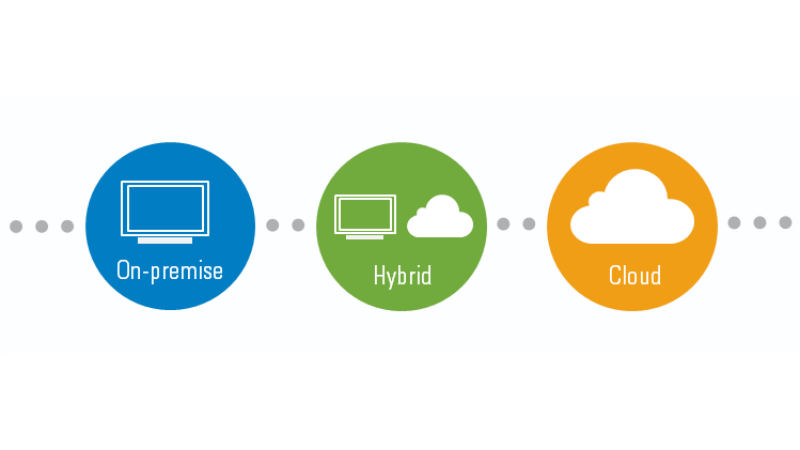
The Middle Road in the Clouds
When discussing cloud solutions for IT infrastructure, people usually consider two extremes: putting everything on the cloud, or putting everything on-prem.
And while there are advantages and disadvantages to having data on the cloud (and the same goes for having data on-prem), sometimes you just want to have the advantages of both solutions, without the disadvantages of either.
There is a middle road that might just fit the need of your organization.
This is where a hybrid cloud might come in.
The Hybrid Cloud
The hybrid cloud is a computing environment that allows you to integrate between on-prem resources, private clouds, and public clouds.
This could include on-prem servers in your datacenter, a private network carried over the internet through a VPN, and a third-party cloud solution, all working together.
Hybrid clouds are flexible enough to allow dynamic resources with the option to pay only for what you use. This means that the size of your storage and database, and the power of your compute can be expanded into the cloud as much as you need for as long as you need, and revert back to fewer resources when you’re done, paying only for the data transactions you carried out.
You can house permanent data in purchased servers on-prem, and expand temporary data (like testing environments) or operations (like complex analytics) into the cloud.
This feature is known as cloud bursting.

How does that solve any of my problems?
The advantages of using hybrid clouds are numerous. Think of this as adding benefits from the cloud to on-prem, or vice versa. What would that look like?
These are some examples of how organizations can leverage the hybrid cloud to the advantage of their business.
Space or Cost Restrictions
The creation and expansion of datacenters is an investment of time and money. The space required to house your servers (Room? Floor? Building?!), the hardware, the supporting equipment (including racks, HVAC, security and safety measures)… All of this requires time to plan, acquire, and set up, not to mention the funds needed.
The need to expand your datacenter can arise at inopportune times. Times when you can’t build/buy /rent the extra space, or can’t wait for those processes to pan out. An urgent need to expand can put your business in a tight spot that needs a quick but fault-proof solution to tide you through.
This is an example where you could expand into the cloud while still maintaining the resources of your datacenter, merging the two together to form a hybrid cloud.
Temporary Need for Resources
Hybrid clouds could be extremely useful when you need to add temporary resources to your infrastructure.
For example, if you need to modify the structure of your database, but you don’t have enough capacities on your servers to house the development and testing environments. You know you’ll only need those environments temporarily, and you only make these kinds of changes on an extremely infrequent basis.
Why should you invest in physical resources?
A hybrid cloud might help you. By leaving your operations environment on-prem and leasing extra storage for development and testing environments, you ensure that you only pay for the extra capacities when you’re actually using them.
Another example could be upcoming projects that require more compute power, database, or storage than what your infrastructure can handle.
If it’s just this one project, you won’t need the extra resources afterwards.
Why would you expand your physical infrastructure?
This case can be seen during high-traffic seasons for e-commerce websites, or in big data operations, where you keep hosted data on-prem, but use the extra cloud firepower to handle the heavy workloads.

Industry Standard and Regulation Compliance
Organizations functioning in certain industries or working with government entities might find their IT infrastructure and the way they handle data needing to adhere to certain regulations and industry standards. Cloud providers, unfortunately, might not allow some of the measures needed for those specific regulations…
What do you do? Do you repatriate all your data, taking it off the cloud? Do you switch providers, migrating all of your data, and risk losing business continuity?
This is another case where hybrid clouds could present a solution. You could move the data that will fall under the scrutiny of your potential partners to a more compliant provider or to your own servers (applying whatever measures you want), and integrate that with whatever other components your infrastructure contains. This will mean the data they want compliant is up to standard, and the rest of your data doesn’t have to be migrated.
Security Standards Compliance
Many organizations need to have their data compliant to certain security standards due to the nature of their operations or the data they handle. Enforcing compliance in on-prem environments is possible, but will require time and resources.
Hybrid clouds could help here as well. Large cloud providers come with security standard compliance built in, so moving the data that needs to be compliant to a compliant cloud takes care of that for you. The rest of your data can remain at your servers, and the two environments just need to be integrated to form the hybrid cloud.
Remote Access
Needing remote access is a common use case for hybrid clouds.
A business whose employees are constantly on the move, organizations with offices in multiple locations, employees in countries where you don’t intend to expand… all are examples where you’d need remote access. Other cases might be your business allowing people to work remotely, whether it’s company culture, or a lack of space to accommodate everyone, or even due to emergencies, crises, and unsafe environments.
On the one hand, remote access to on-prem data through VPNs represents a bottleneck and could result in higher latency times. On the other hand, moving all your data to the cloud might incur a large bill, given the vastness of your data. Plus, you might need the resources in your server to do some of the heavy lifting your organization requires.
Here is where you might set up a hybrid cloud, moving frequently accessed data to the cloud where anyone, anywhere can access it with ease, and keeping low-key data and resource-intensive operations on your servers.

The Verdict
Hybrid clouds can give you the best of both worlds, allowing greater control over how data is handled in on-prem servers, but giving remote access to employees in the field or geographically distant sites. They’re also a good solution for temporary data or resources and can be quickly obtained in cases where you can’t wait for physical expansions.
